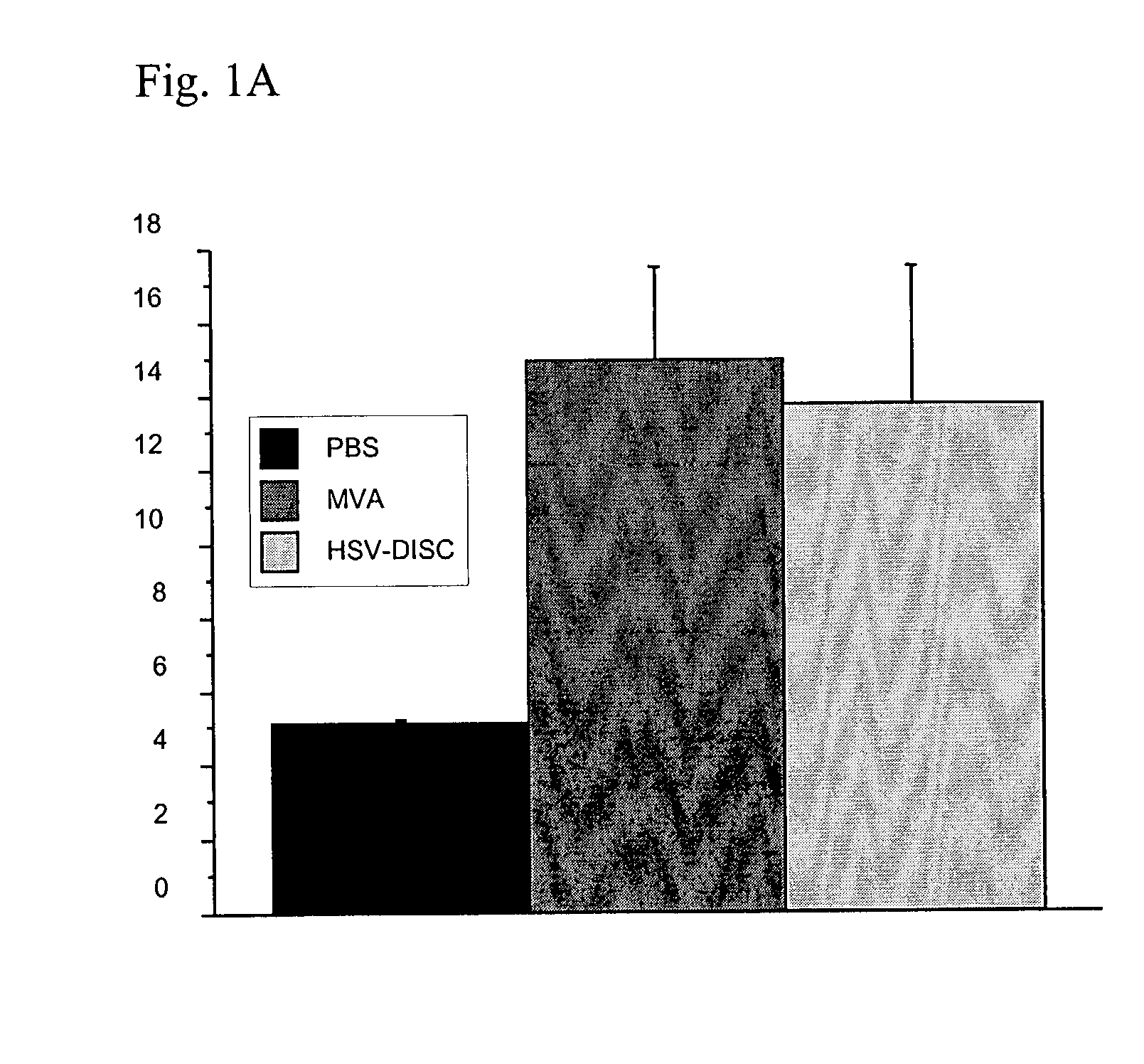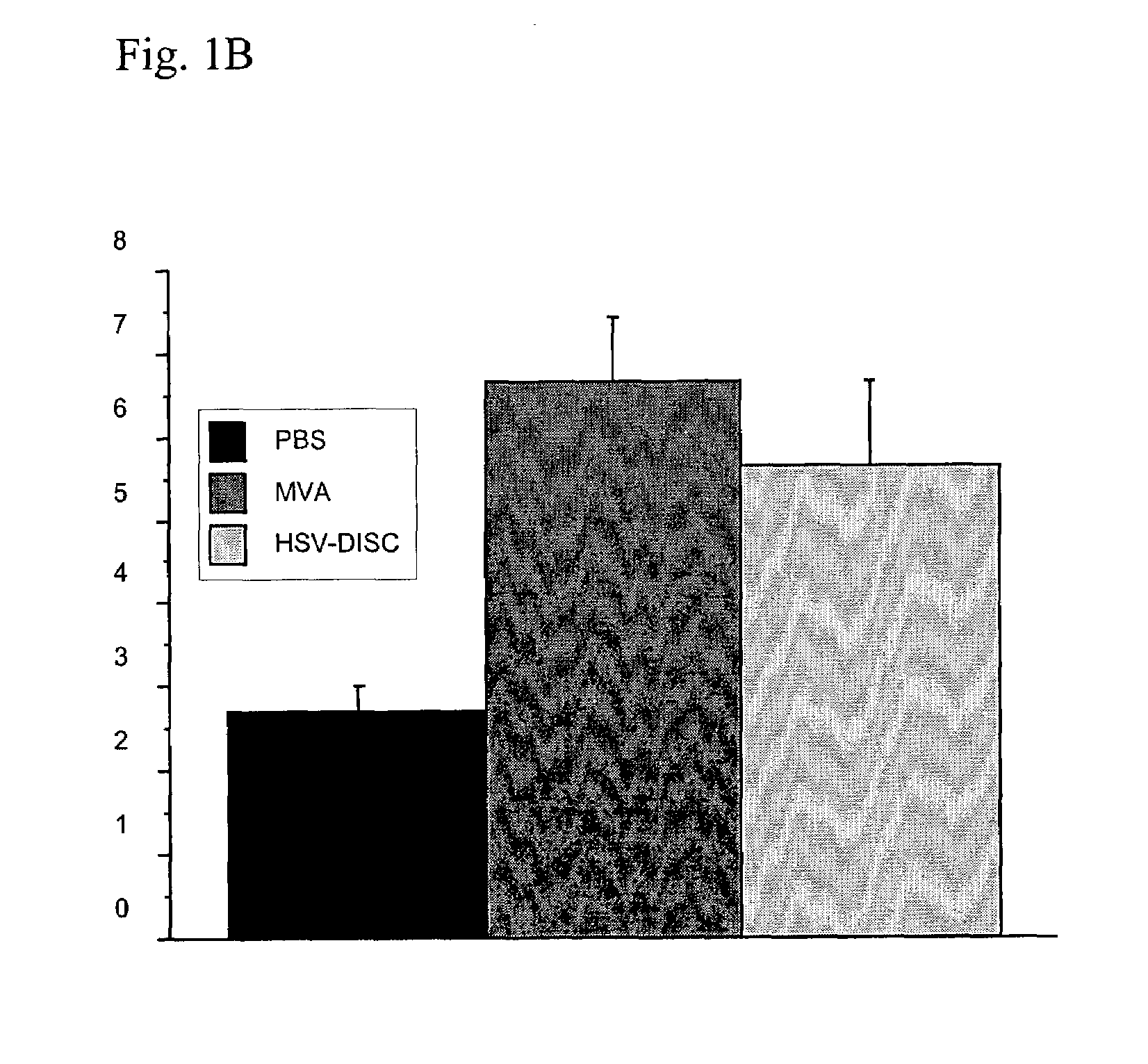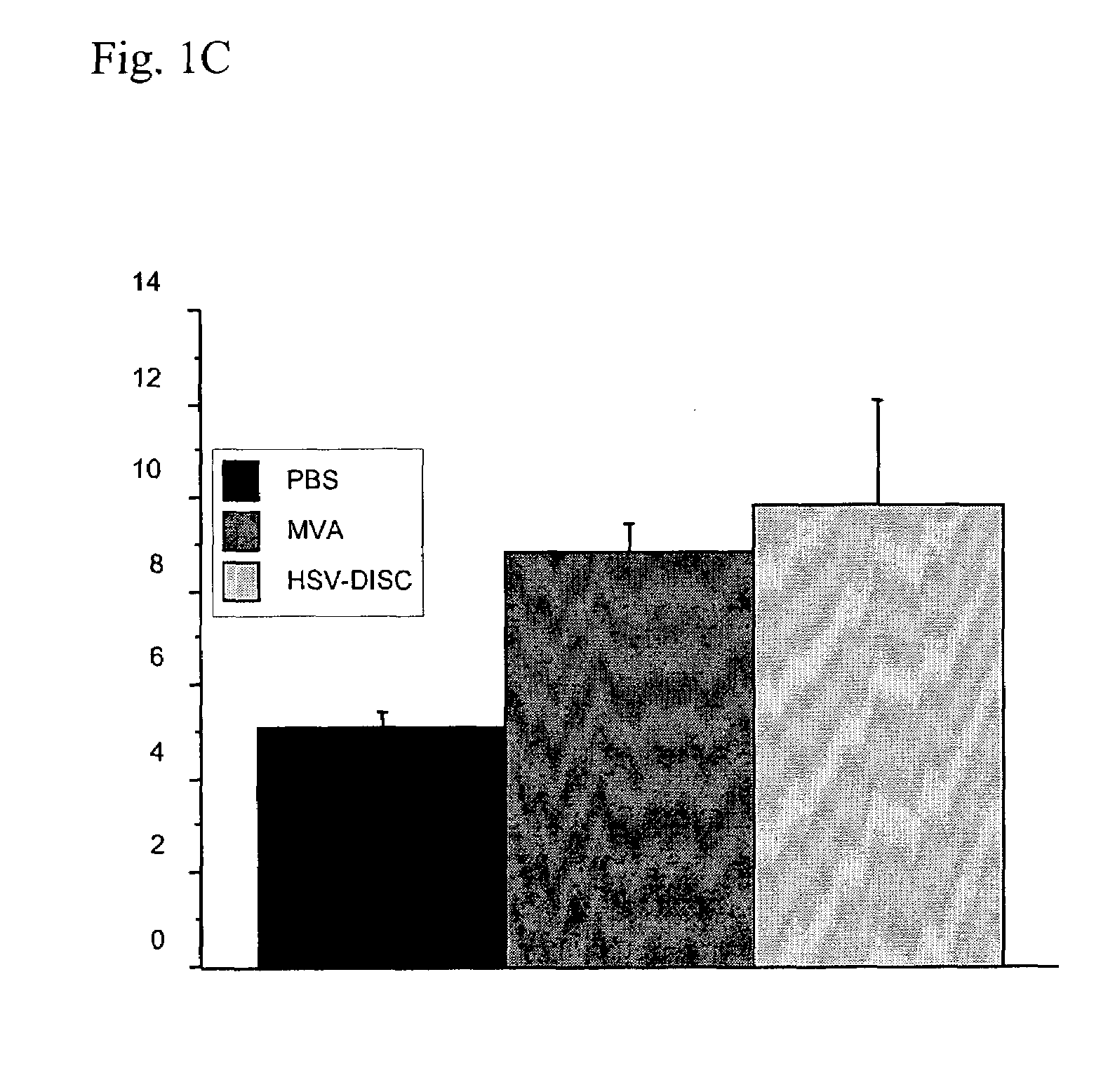Modified vaccinia virus ankara for the vaccination of neonates
a technology of neonates and vaccinia virus, which is applied in the field of neonate vaccination of modified vaccinia virus ankara, can solve the problems of not being able to replicate to infectious progeny, and achieve the effects of accelerating the maturation of the immune system, and reducing the risk of infection
- Summary
- Abstract
- Description
- Claims
- Application Information
AI Technical Summary
Benefits of technology
Problems solved by technology
Method used
Image
Examples
example 1
(i) MVA-BN and DISC-HSV Induce DC of the CD11c+ and CD8+ Phenotype in Newborn Animals
[0154]First set of experiments: Newborn mice are naturally immunodeficient because the IFN system is not mature. The number and activation state of DC, the best producers of IFN known today, has not been analyzed. DC can be induced in vitro, as well as, in vivo by a variety of stimuli. These studies tested whether a controlled MVA-BN replication could induce DC, and also analyzed their phenotype. Groups of mice were injected with 106 plaque forming units (p.f.u.) of MVA-BN, or saline only, within 1–2 days after birth, and in some cases, 5 days after birth. Blood and spleen cells from individual mice of both groups were analyzed by FACS and the data compared.
[0155]Data from 7 to 8 individual mice indicated that treatment with MVA-BN increased CD11c+ cells by 2 to 3-fold, accompanied by an increased expression of MHC II and increased presence of T cells of the CD4 or CD8 type. Interestingly, CD19 / 54, ...
example 2
(i) MVA-BN Treated Neonatal Mice Survive a Challenge With 100 to 500 LD 50 of HSV-1
[0165]Groups of mice were treated with the standard dose of MVA-BN 1 or 2 days after birth, and challenged at 7 to 8 days of age with 100 to 500 LD 50 of Herpes simplex virus 1 (HSV-1) (FIG. 4). MVA BN treated mice survived the challenge with HSV 1, whereas all the control mice died within 5 to 6 days after inoculation with the challenge virus.
[0166]To further support these observations, 9 challenge experiments were performed with 40 MVA BN treated and 45 control mice. More than 80% of the virus treated mice survived the challenge, whereas all the control mice died (FIG. 5).
[0167]In a separate set of experiments, the mice were treated at birth with MVA-BN (2.5×106 TCID50 / mouse). At day 8, a challenge with either 103 (1 LD50) or 105 (100 LD50) pfu of HSV-1 was performed. Following MVA-BN vaccination, 65% of the mice survived a viral dose that killed 100% of the control mice (100 LD50), and 90% survived...
PUM
 Login to View More
Login to View More Abstract
Description
Claims
Application Information
 Login to View More
Login to View More - R&D
- Intellectual Property
- Life Sciences
- Materials
- Tech Scout
- Unparalleled Data Quality
- Higher Quality Content
- 60% Fewer Hallucinations
Browse by: Latest US Patents, China's latest patents, Technical Efficacy Thesaurus, Application Domain, Technology Topic, Popular Technical Reports.
© 2025 PatSnap. All rights reserved.Legal|Privacy policy|Modern Slavery Act Transparency Statement|Sitemap|About US| Contact US: help@patsnap.com



